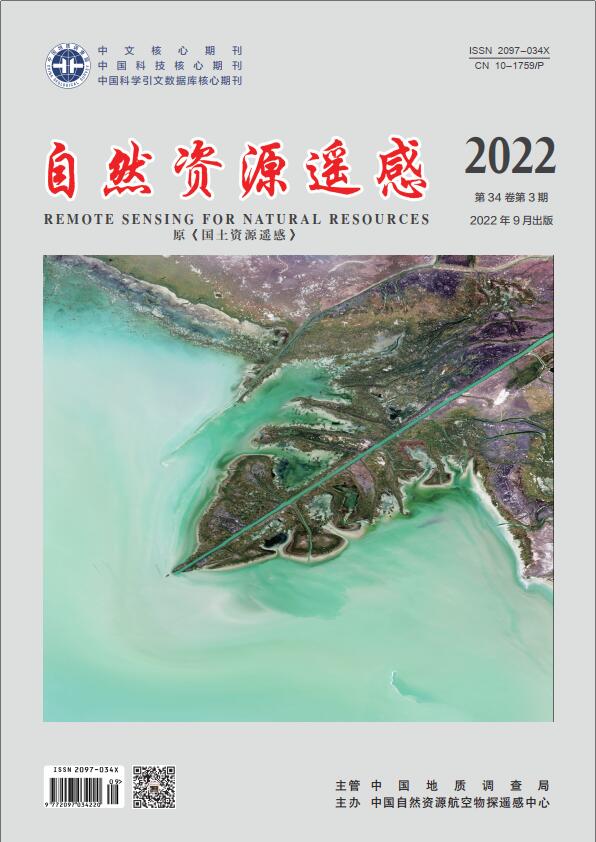| [1] |
张剑. 林火监测与预警在森林防灭火中的运用[J]. 林业科技, 2021(2):165-166.
Google Scholar
|
| [2] |
Zhang J. Application of forest fire monitoring and early warning in forest fire prevention[J]. Forestry Technology, 2021(2):165-166.
Google Scholar
|
| [3] |
覃先林, 李晓彤, 刘树超, 等. 中国林火卫星遥感预警监测技术研究进展[J]. 遥感学报, 2020, 24(5):511-520.
Google Scholar
|
| [4] |
Qin X L, Li X T, Liu S C, et al. Forest fire early warning and monitoring techniques using satellite remote sensing in China[J]. Journal of Remote Sensing, 2020, 24(5):511-520.
Google Scholar
|
| [5] |
周利霞, 高光明, 邱冬生. 基于MODIS数据的火点监测指数方法研究[J]. 火灾科学, 2008, 17(2):77-82.
Google Scholar
|
| [6] |
Zhou L X, Gao G M, Qiu D S. Fire-monitoring method of FPI-NDVI based on MODIS data[J]. Fire Safety Science, 2008, 17(2):77-82.
Google Scholar
|
| [7] |
马芮, 孙林, 袁广辉, 等. 可见光红外成像辐射仪数据林火识别算法研究[J]. 遥感信息, 2015, 30(4):37-42.
Google Scholar
|
| [8] |
Ma R, Sun L, Yuan G H, et al. Technology and method of forest fire monitoring using NPP VIIRS data[J]. Remote Sensing Information, 2015, 30(4):37-42.
Google Scholar
|
| [9] |
覃先林, 易浩若. 基于MODIS数据的林火识别方法研究[J]. 火灾科学, 2004, 13(2):83-89.
Google Scholar
|
| [10] |
Qin X L, Yi H R. A method to identify forest fire based on MODIS data[J]. Fire Safety Science, 2004, 13(2):83-89.
Google Scholar
|
| [11] |
张婕, 张文煜, 冯建东, 等. 基于亮温-植被指数-气溶胶光学厚度的MODIS火点监测算法研究[J]. 遥感技术与应用, 2016, 31(5):886-892.
Google Scholar
|
| [12] |
Zhang J, Zhang W Y, Feng J D, et al. An improved algorithm for forest fire detection:A study based on brightness temperature, vegetation index and AOD[J]. Remote Sensing Technology and Application, 2016, 31(5):886-892.
Google Scholar
|
| [13] |
饶月明, 王川, 黄华国. 联合多源遥感数据监测四川木里县森林火灾[J]. 遥感学报, 2020, 24(5):559-570.
Google Scholar
|
| [14] |
Rao Y M, Wang H, Huang H G. Forest fire monitoring based on multisensor remote sensing techniques in Muli County,Sichuan Province[J]. Journal of Remote Sensing, 2020, 24(5):559-570.
Google Scholar
|
| [15] |
Kaufman Y J, Tucker Q, Fung L. Remote sensing of biomass burning in the tropics[J]. Journal of Geophysical Research, 1990, 95:9927-9939.
Google Scholar
|
| [16] |
Giglio L, Descloites J, Justice C, et al. An enhanced contextual fire detection algorithm for MODIS[J]. Remote Sensing of Environment, 2003, 87(2/3):273-282.
Google Scholar
|
| [17] |
陈兴峰, 刘李, 李家国, 等. 卫星遥感火点监测应用和研究进展[J]. 遥感学报, 2020, 24(5):531-542.
Google Scholar
|
| [18] |
Chen X F, Liu L, Li J G, et al. Application and research progress of fire monitoring using satellite remote sensing[J]. Journal of Remote Sensing, 2020, 24(5):531-542.
Google Scholar
|
| [19] |
胡梅, 齐述华, 舒晓波, 等. 华北平原秸秆焚烧火点的MODIS影像识别监测[J]. 地球信息科学, 2008, 10(6):802-807.
Google Scholar
|
| [20] |
Hu M, Qi S H, Shu X B, et al. Monitoring fire from crop residues burning with MODIS data in north China plain[J]. Geo-Information Science, 2008, 10(6):802-807.
Google Scholar
|
| [21] |
陈艳英, 游扬声, 何正明, 等. 重庆市森林火灾时空分布特征分析[J]. 中国农学通报, 2014, 30(13):51-58.
Google Scholar
|
| [22] |
Chen Y Y, You Y S, He Z M, et al. Analysis on temporal-spatial feature of forest fires in Chongqing[J]. Chinese Agricultural Science Bulletin, 2014, 30(13):51-58.
Google Scholar
|
| [23] |
陈艳英, 游扬声, 唐云辉. 局域地形和林火数量对区划方法的影响规律研究[J]. 自然灾害学报, 2015, 24(2):228-234.
Google Scholar
|
| [24] |
Chen Y Y, You Y S, Tang Y H. Research of forest fire zoning based on local topography and fire numbers[J]. Journal of Natural Disaters, 2015, 24(2):228-234.
Google Scholar
|
| [25] |
李伶俐, 李江文, 钟守琴, 等. 基于地形复杂度的重庆市耕地“宜机化”改造适宜性评价[J]. 中国生态农业学报(中英文), 2022, 30(2):302-313.
Google Scholar
|
| [26] |
Li L L, Li J W, Zhong S Q, et al. Suitability evaluation of suitable-for-mechanization transformation of cultivated land based on topographic complexity in Chongqing,China[J]. Chinese Journal of Eco-Agriculture, 2022, 30(2):302-313.
Google Scholar
|
| [27] |
毛玉龙. 第三次国土调查对耕地的调查和认定[J]. 西部资源, 2021(6):166-168.
Google Scholar
|
| [28] |
Mao Y L. Investigation and identification of cultivated land in the third national land survey[J]. Western Resources, 2021(6):166-168.
Google Scholar
|






 DownLoad:
DownLoad: